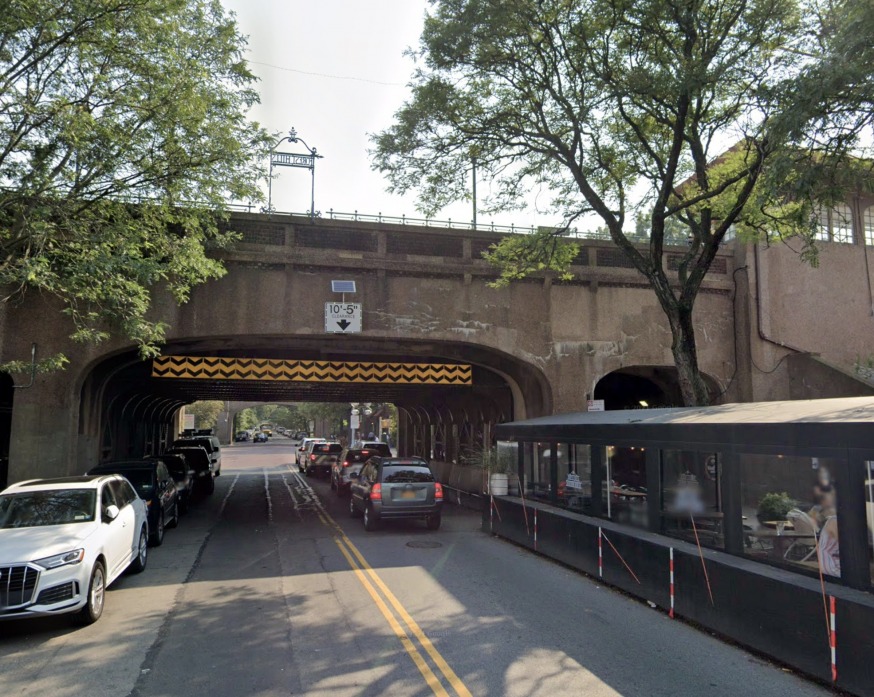
Forest Hills LIRR station underpass (Google Maps)
Dec. 8, 2021 By Allie Griffin
Queens elected officials are calling on the Metropolitan Transportation Agency to revamp the Forest Hills LIRR train station — and clean up the surrounding area on Burns Street — which they say has not been properly maintained.
Seven legislators, alongside local residents who formed the Burns Street Alliance, penned a letter to the agency to share their concerns regarding the station and adjacent area.
They asked MTA LIRR President Phillip Eng to schedule a meeting to discuss a number of maintenance issues as well as possible renovations to the 110-year-old station.
Assembly Member Andrew Hevesi, Congress Member Grace Meng, State Senators Joseph Addabbo and Tony Ann Stavisky, Council Member Karen Koslowitz, Council Member-elect Lynn Schulman and Queens Borough President Donovan Richards signed onto the Nov. 30 letter alongside the Burns Street Alliance.
Their letter includes a list of ongoing quality-of-life problems at and around the station. The Burns Street Alliance said that there are pigeons and water leaks inside the overpass at Continental Avenue; invasive plant species and vines around the station; loud noise and vibrations from the train; and litter along the embankments.
The officials also complained that LIRR crews did repair work without providing the community with advance notice. In addition, they wrote, the workers often block cars with their equipment and leave behind construction materials after completing a job.
In addition, the legislators and residents asked the MTA to discuss possible renovation projects for the station, including the installation of elevators, a platform extension and restoration efforts.
They requested that the MTA extend the train platform to accommodate 12 train cars — double the number of cars it currently fits — and to install passenger elevators to bring the station up to date with the Americans with Disabilities Act requirements.
The station platforms were extended to accommodate six train cars — up from four — in 2018, but LIRR trains can be up to 12 cars long.
The lawmakers also asked the MTA to restore historical elements of the station, repair any deteriorating platforms, build a sound barrier to help block noise and vibrations, and install a pigeon barrier on the overpass.
They noted that the agency could possibly use funding from the federal Infrastructure Investment and Jobs Act, which Meng helped pass.
Meng previously said that nearly $17 million in federal funding could be allocated to repair and renovate the Forest Hills LIRR station.
The station, built in 1911, is one of the oldest operating railways in the city.
LIRR Burns St Alliance Letter by Queens Post





